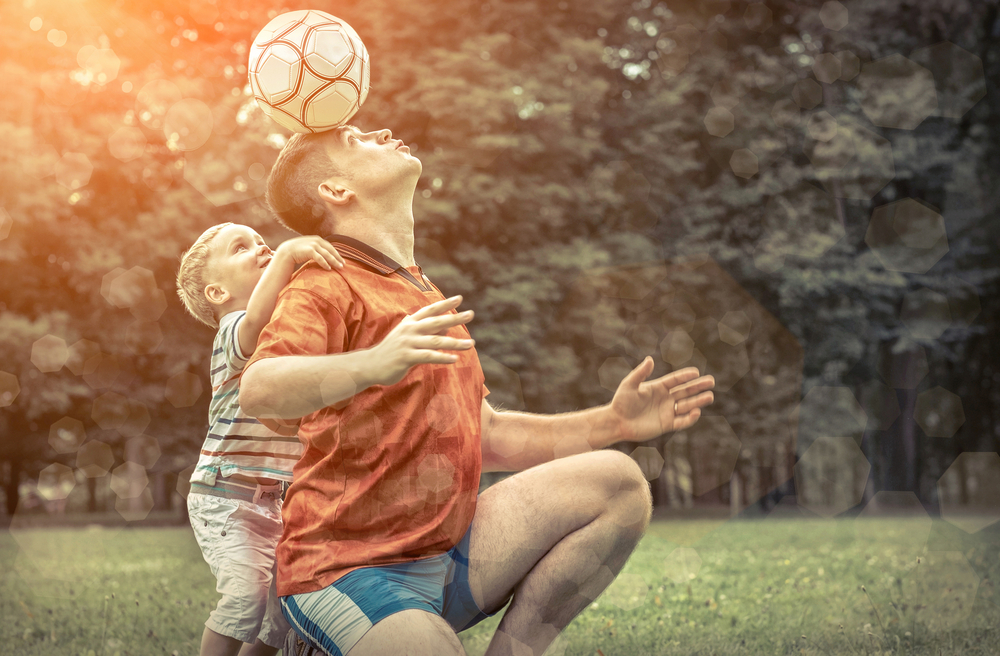Top Ten Sporting Myths That Are Killing Your Sport
Sporting Myths Are Killing Your Sport.
Life has its share of myths and legends.
There’s the myth that lightning never strikes twice in the same place. Wrong! In fact, there’s a lot of evidence that tall buildings and other structures are hit by lighting many many times.
And then there’s the myth about Tomatoes being a wonderful, tasty, healthy, nutritious vegetable. They’re actually considered to be a fruit.
In the sports industry, there’s many sporting myths which although are commonly practiced and preached around the world are just as wrong as our beliefs about lightning and tomatoes.
Let’s look at the the Top Ten Sporting Myths that are Killing Your Sport.
Sporting Myths 1: The Pathway.
Practically all governments and all sports have been lured into the “looney-logic” of the pathway model which declares that there’s one way to develop athletes along a linear progression, i.e. along “the pathway”.
The Pathway has caused many of the problems competitive sport is currently experiencing across the globe. Because of its (i.e. the pathways) assumption that all athletes want to or can progress from being beginners to experts, sports have based their entire systems on programs and practices that are aimed at the long term development of athletic potential.
Nothing could be further from the truth.
The vast majority of kids do not want to be greats. They don’t want to be Olympians. They don’t want to play professional sport. They just want to have fun, make friends, enjoy the experience of sport and generally have a good time being involved in engaging, interesting, entertaining and stimulating activities.
In other words, the reason why sport is in so much trouble around the world is that by basing our philosophies on “the pathway” we’ve given our “clients” exactly the OPPOSITE of what they’re looking for.
Myth Buster Solution: Scrap “the pathway” model. Seriously – stop talking about it, stop hiring people to run it and stop funding it. Invest in building and growing your sport from the ground up by providing quality experiences for everyone involved.

Sporting Myths 2: Modified Games will save sport.
In response to the decreasing numbers of kids playing competitive sport, governments and national sporting organizations around the world have turned to marketing companies to develop “modified” games.
It’s not going to work!
Imagine for a moment you just bought a restaurant. Working at your restaurant is a nice old guy who’s been the waiter at the restaurant for a long time. He sort of came with the restaurant when you bought it and you can’t fire him.
The waiter is a good guy. Enjoys his work. Loves to be in the food industry. Works hard.
But he has no idea about customer service. He doesn’t connect with customers. He doesn’t listen to customers. He’s unwilling to learn about customer service and he doesn’t want to change the way he’s waited on tables for the past 20 years.
That’s why modified games, marketing and promotional campaigns to increase the numbers of kids playing competitive sport will not work.
The people actually delivering sport – i.e. the coaches, officials, club committees etc. are great people who love sport but the rate and the extent of change in the industry is something they are finding very difficult to get their heads around.
Simply rolling out a new version of the sport and asking them to deliver it doesn’t really change anything – unless the sport’s governing bodies invest heavily into the training and development of the people delivering the new sport product.
Myth Buster Solution: Stop coming up with all kinds of weird and wacky modified sports products. Invest in coaches and coaching. Focus on helping the people already delivering your sport’s experiences to do what they do – better.
Sporting Myths 3: Coach education has improved coaching.
What’s one of the biggest problems in sport around the world right now?
A lack of quality coaches at all levels of sport!
Coaches who can connect with kids and families.
Coaches who can create and grow enjoyable, engaging, entertaining and effective coaching environments and quality learning experiences.
Coaches who can inspire young athletes to achieve remarkable things.
Wait a minute…..
There’s a real lack of of quality coaches around the world BUT…
Almost every nation – every sporting federation – every sporting organization in the world has a coach education program??!!!
Coach education to this point has not produced better coaches.
We’ve got plenty of coaches who can hold a stop watch.
Lots of coaches who can write a nice, neat periodized plan.
Many, many coaches who can spell A.T.P. and say “proprioceptive neuro-muscular facilitation” backwards.
But, in terms of coaches who can actually coach – we’ve (and I include myself) failed.
It’s time to change the way we develop coaches.
Myth Buster Solution: Scrap the 30-year-old approach to educating coaches. There’s been way too much focus on sports science, periodization and other irrelevant rubbish that has not improved the quality of coaching. Change your coaching courses, coach education resources, coach education assessment processes and focus on continuous improvement, contextual development and coaching coaches to coach.
Sporting Myths 4: Sports science is working.
If anything has over-promised and under-delivered in sport it’s sports science. Go back and look at the research being done and practices being employed in sports science in the 1980s and 1990s. Now compare them to what’s happening now. Two things have changed:
- Things are done faster;
- Things are done with more accuracy.
However, if you actually spend time reading the most recent research work in the major peer-reviewed journals there’s little difference between what was done 30 years ago and what’s being done now. Sports scientists are still investigating VO2 Max for pete’s sake! And break points in aerobic-anaerobic metabolism. And the effect of supplements of sports performance. And the right depth to perform back squats.
This stuff has been done to death since the 1960s. Isn’t it time to move on?
And most importantly, sports science for the most part is still being researched and delivered from single discipline approaches which are now considered anachronistic in so many other industries.
Myth Buster Solution: Universities need to change the way they develop and train sports scientists from discipline specialists to professionals who can think, create and work in a multi-disciplinary way. The sports industry has to change the way it thinks of sports science…it’s not THE answer – it’s just one part of the overall solution.
Sporting Myths 5: Parents are the enemy!
For a long time parents have been treated as the “enemy” in the sports industry.
One of the jokes in the coaching community for some time has been that the idea that a coaching “nirvana” would be to have exclusive coaching rights to a world class sports facility built right next door to the world’s largest orphanage!
However, parents are critically important to sport – now – more than ever.
Firstly, the majority of people who actually deliver sport are amateur, part time, first time coaches and officials – i.e. the parents of kids who are playing sport. The majority of the sports industry workforce are in fact sporting parents.
Second, helping kids to learn to love competitive sport is a partnership: coaches, athletes and parents working together as a team.
In that partnership coaches – simply – coach.
Athletes give the best they can give to their training and competition.
But the job of a parent is far greater and more important than we’ve ever realized. Parents help to develop values. To nurture virtues. To love, value and accept their children for no reason other than they are their children. To teach life-lessons like time management, self-responsibility and accountability. To do all the practical stuff…pay the bills, drive the kids to training, purchase and cook healthy food….and many many other things.
When it comes down to it, sport can not exist without sporting parents…so why not engage with them and embrace them as key partners in the sports experience?
Myth Buster Solution: Invest in sporting parent education and training. Embrace parents as key deliverers and providers of the sports experience.
Parents are the key to growing sport in the future.

Sporting Myths 6: National Sporting Organizations have all the answers.
Now, sport is owned by, driven by, led by, delivered by – people. Increasingly people are taking back ownership of sport – or to be more specific – taking back the sports experience they are seeking.
In the past, people sat back and waiting for national sporting organizations and governments to roll out new programs and projects. Now – people are creating the sports experience they want – when they want it – where they want it and the relevance of sporting organizations is increasingly under treat.
Myth Buster Solution: Instead of developing new programs, projects and policies, sporting organizations and governments need to provide flexible, dynamic and changeable opportunities for people to play sport. Give people the environments and the opportunities to create the sports experience THEY want – rather than imposing rigid controls and tight rules on children and families to play sport YOUR way.
Sporting Myths 7: Facilities are the key to success.
Every sport – every coach – every sporting organization believes in the old saying “if you build it they will come”.
In other words, people in the sports industry believe that if they have more and better facilities, they’ll attract and retain more participants.
Real Life Experience:
I was recently working with what could only be described as an “awful” coach. No connection with the athletes. Arrived late to training. Took mobile phone calls during training sessions. Drank coffee – including leaving the training environment (and the athletes) to get more coffee. Yelled at the kids. Ignored the parents. The workout was poorly designed and delivered without engagement, energy, enthusiasm or expertise.
When I talked with the coach after the session, I asked them about their coaching and their program and what they thought they needed.
They responded, “A new pool. A much bigger pool and a new gym”.
Unfortunately this is not an isolated incident and it is commonly seen all over the world.
Why?
Because we’re “wired” to invest in things we can see, feel, build and buy. It’s easy to build a new facility. It’s much much harder to build a workforce with the qualities, skills and attributes to deliver outstanding sports experiences to children and families.
Myth Buster Solution: Stop building new facilities until you’ve invested in improving the skills and abilities of the people delivering your sport “at the coalface”.
Sporting Myths 8: More money can solve all problems.
It’s no good coming up with a great solution to the wrong problem.
More money is only the solution if having a lack of money is the problem.
Will more money inspire and teach your sport’s workforce to provide more engaging sports experiences to children and families?
Will more money improve the ability of your coaches to coach with creativity, connection and collaboration?
Will more money bring everyone in your sport together to work as a united team with a customer focused approach to delivering a quality sports experience for children and families?
Everyone says money is the problem but for the most part, money will not make a difference because what sport is experiencing is not a money problem: it’s a people problem.
So many people are stuck in the old ways of delivering sport and it’s killing the very thing they’re all trying to grow.
Myth Buster Solution: Invest in people. When you see people doing things that are working – invest in them and in their ideas. Stop throwing money at national programs and national campaigns. Support people at local level and grow your sport from the ground up.
Sporting Myths 9: The answers you seek are in other countries.
At this moment in time, no nation has got the solutions to the current problems competitive sport around the world is facing.
Many nations claim they’ve got it right – but the statistics say otherwise. Everyone is throwing money at modified games, at marketing campaigns, at awareness programs, on holding national summits and national think – tanks but no one has got it right…..yet!
It is commonplace for sporting leaders to travel to other nations looking for answers. This is largely a waste of time and money.
Now – more than ever – look to your own nation first.
The answers you seek are already on your doorstep. You just need to look. And you need to get out and listen to and work with the people actually delivering sport in your own country.
Myth Buster Solution: You play like your place! People in Brazil do things like Brazilians. Germans do things their way they do because they’re Germans. Egyptians do things like only Egyptians do. Look to the people in your own country first and connect with them. Seek to understand what they are looking for in their own sports experiences and help them to build and grow a sporting environment which is meaningful and relevant to them.
Sporting Myths 10: The current trend where the number of people involved in organized, competitive sport is falling all over the world is just a fad or a short-term problem.
Wrong. It’s over.
The way we’ve delivered sport for past 100 years is gone. It’s done and dusted. It’s time for a New Sport: A new way of thinking about, talking about and delivering sport.
Myth Buster Solution: Move on. Accept that sport has changed forever and for the better. Re-evaluate everything you’re doing and strive to do it better. Become customer focused and concentrate on building quality, engaging sports experiences for everyone involved in your sport. The results will be remarkable.
That’s my Top Ten Sporting Myths that are killing your sport.
What’s yours?
Wayne Goldsmith
Tags In
Related Posts
2 Comments
Leave a Reply Cancel reply
Categories
- Athlete Development (3)
- Coach Development (1)
- New Sport (10)
- Sports Parenting (1)
- Sports Participation (1)
- Sports Science (1)
- Sports Systems (4)







[…] why National Sports Marketing campaigns don’t work and why we’re looking at the Marketing […]
[…] The future is coming very fast. The trends are obvious and clear if you take 10 minutes to read the abundant literature, media articles and research papers available. High performance sport is about to be decimated. Participation sport is heading towards a period of unprecedented investment. You’ve got to figure out a way to balance the needs of the many with the performance passions of the aspirational few and make your sport truly a sport for all. […]